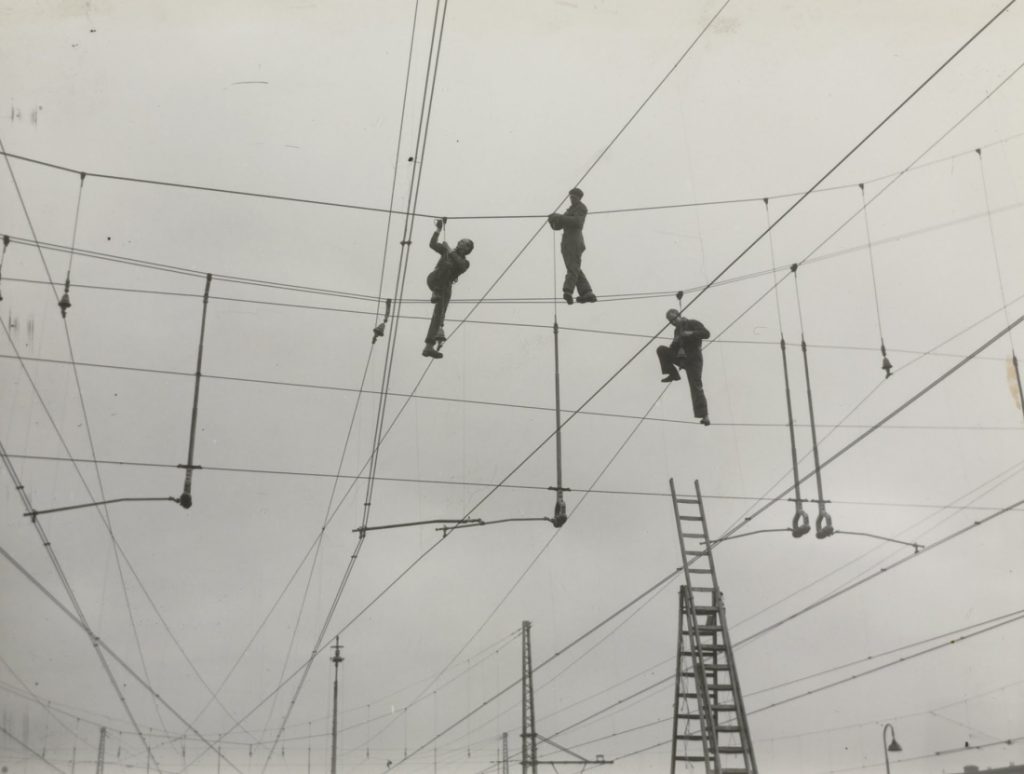In an interactive way, the operation of electric trains and overhead lines is explained and explained how the electrification of the track came about.
'Big changes in the railways'And'When the trains go faster' was the headline in the newspapers in 1938. On May 15 of that year, the electrification of the Central Network was a fact and 90 Mat'36 electric trainsets entered service. With the exhibition 'Under High Voltage' from 26 May, the Railway Museum looks back on this mega operation that made the railways in the Netherlands the most modern in the world in one fell swoop. In an interactive way, the operation of electric trains and overhead lines is explained and explained how the electrification of the track came about. The showpiece of the exhibition is the restored train set Mat'36 252. The exhibition 'Under high voltage, electrification in rapids' is from 26 May to 26 November 2023.
The exhibition
In addition to a fascinating overview of this exciting period in railway history, the exhibition 'Under High Voltage' shows in an interactive way what electrification actually entails. What is needed to electrify a railway line, how does an electric train work and what innovations were there? Visitors can look under the train at the electrical installation and discover how electricity works with interactive games and touchscreens. This way of presenting makes the exhibition suitable for both young and old.
History
At the beginning of the twentieth century, a number of railway lines between the major cities were overloaded. There were simply more train passengers than the reliable but slow trains pulled by steam locomotives could handle. It was decided to electrify the track. After all, electric trains were a lot faster and cheaper to operate than steam trains. A good example was the Hofplein line between Rotterdam and Scheveningen, where an electric train had been running since 1908, which cost much less per train kilometer compared to steam traction.

Install overhead lines
However, electric trains can only run on railway lines with a power supply such as overhead wires. For this purpose, from April 1936, the so-called 'Middennet' was completely overhauled. Over 276 kilometers of track from Utrecht to The Hague, Rotterdam, Amsterdam, Arnhem and Eindhoven, overhead lines were installed. At the same time, the entire infrastructure had to be adjusted, such as signals, switches and level crossings, and signal boxes were moved. And that while the train service continued! It made it a logistically very complicated project. Nevertheless, NS managed to complete the work in two years. On May 15, 1938, 53 electric two-car sets and 37 three-car sets Mat'36 entered the timetable.
Rigid timetable
Electric trains could accelerate and brake faster, which offered opportunities to improve the timetable. Therefore, on 15 May 1938, a so-called 'rigid timetable' was introduced. The trains started running at fixed times. A two-hourly service was run on all lines, and a regular hourly or half-hourly service on the busier sections of track. Travel times were considerably shorter as a result.
Mat'36
The design of the Mat'36 was copied from the diesel-electric trains (Mat'34) built two years earlier, but it was still revolutionary. The streamlined shape not only contributed to higher speeds, but also to the modern image that NS wanted to adopt in that period. The interior had a modern design, including tubular frame benches, and people tried to steer travelers in and out with the so-called check-in and check-out signs so that people could get in and out faster.
The trains were equipped with disc brakes for the first time, revolutionary for the time. Also new was that the trains from the Mat' 36 series were fully welded and no longer riveted. As a result, their weight was lower and higher speeds of 125 km/h could be achieved. The Mat'36 252, now restored by the Railway Museum, went out of service in 1968 and was saved from demolition by the Stibans, the foundation for the preservation of Dutch railway equipment to be disposed of. With the support of the Stibans and the Association of Friends of the Railway Museum, the Mat'36 has now been completely restored and can be seen for the first time in the Railway Museum.
Photo top and middle: Railway Museum Collection.



